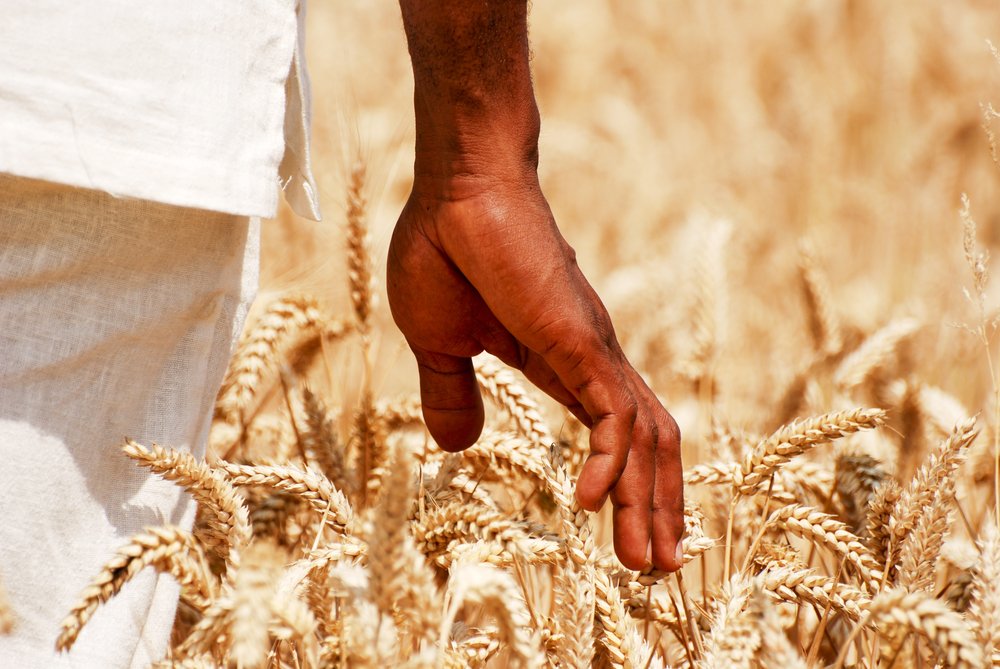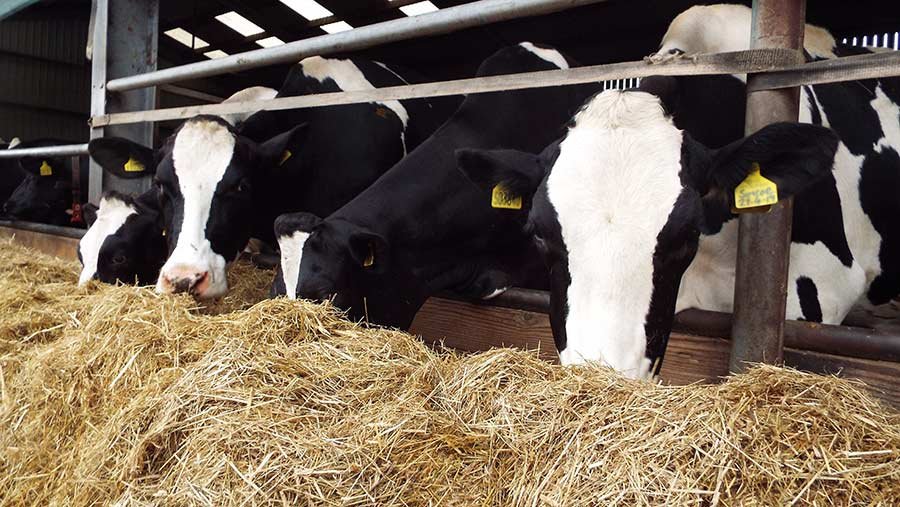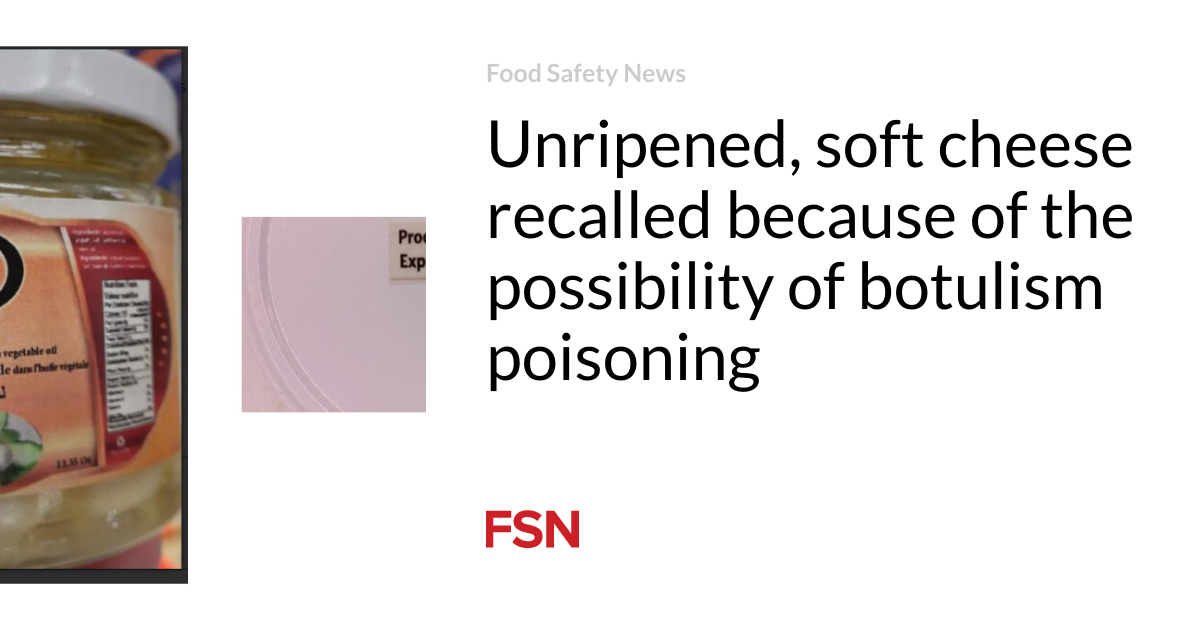Improvements in milk quality and yield have helped cut the carbon footprint of a Scottish indoor dairy unit by 42% in a year.
Farm output at Low Ballees, a new AHDB strategic dairy farm near West Kilbride in north Ayrshire, has increased by 47%, from 1.28m kg of milk, beef and lamb in 2021, to 1.87m kg in 2022.
Low Ballees is farmed by Tom Campbell, his wife, Marion, and his son, David. It is the first in a new series of strategic farms with a focus on environmental impact.
See also: 20 ways dairy producers can tackle net zero
“Overall emissions are down 15% since 2021, which is a great result in and of itself,” says SAC Consulting’s Alexander Pirie, who carried out carbon audits for the farm.
“But it’s really the increase in output that has decreased the carbon footprint.”
The first carbon audit report for the 125ha (309-acre) farm concluded that it was “operating at a high level of carbon efficiency, and, with small adjustments, could cut emissions further”.
This has proved to be the case (see “Carbon footprint of Low Ballees in 2021 and 2022”).
Carbon footprint of Low Ballees in 2021 and 2022 |
|||
|
|
Year ending June 2021 |
Year ending June 2022 |
% change |
|
Farm carbon footprint* (carbon dioxide equivalent (CO2e)/kg output) |
1.39 |
0.81 |
-41.69 |
|
Dairy carbon footprint (CO2e/kg fat- and protein-corrected milk) |
1.21 |
0.95 |
-21.4 |
|
* Including carbon capture from farmland hedges. Note: Calculations were made using AgRE Calc, Scotland’s Rural College’s agricultural resource efficiency calculator. Source: SAC Consulting |
|||
Improvements
David Campbell points to five factors that have helped bring down the farm’s carbon footprint in 2022:
- Yield increase of about 500kg, to 11,000kg, following herd expansion. Additional first-lactation heifers had not reached peak production when the first audit was taken in 2021
- 0.19% increase in butterfat, attributed to fine-tuning of ration management
- Improvements in dairy herd health leading to lower involuntary culling
- Use of digestate leading to reduced use of inorganic fertiliser
- In 2021, work extending the silage pit used more diesel than average.
The improvement in the farm’s carbon footprint is “welcome and not entirely unexpected”, he says, because, in thinking about the issue much more, the family has made the connection between carbon and money.
Rather than seeing a carbon audit as an imposition or a tick-box exercise, he regards it as a valuable tool to highlight opportunities to improve input efficiency.
“Everything that makes your carbon audit worse is something you spend money on,” he explains.
“My take on it is, your carbon audit is going to be higher if you use more fuel, more fertiliser, if you use feed inefficiently or have deadstock.
“But, if you can get your carbon audit as low as possible, it’s good for the planet and good for the pocket.”
Dairy system at Low Ballees
- 125ha (309 acres)
- Milking 110 Holsteins year-round, with 56 bulling heifers
- Fully housed herd on total mixed ration (TMR)
- Two milking robots
- 11,000-litre average 305-day yield, with 4.1% butterfat and 3.3% protein
- Milk sold to Graham’s Dairies
- Silage pit extended and made double-ended, allowing consistent TMR to be fed year-round
- Two cuts for clamp silage; thereafter, silage bales made from tidying up fields
- Previously zero-grazing milkers, but inconsistency of grass fed during wet summer proved detrimental to milk quality
- Youngstock and far-off dry cows grazed; bulling heifers zero-grazed indoors at 12-13 months old and go back out once in-calf. Cows and in-calf heifers then come indoors a month before calving
- Age at first calving 24-25 months
- Sheep grazing let to neighbouring farmer in summer and winter as grass management tool for some wetter areas of farm. Farm’s own sheep flock now sold to devote more time to dairy
Ambition
Mr Campbell would like to see how low the family can get the carbon footprint without compromising farm output. The way it is looking now, he says, output is actually bringing it down.
As a strategic dairy farmer, he says he wants to try to show that, while one year’s carbon audit might differ from another’s, depending on activities, this is not necessarily a bad thing.
“You might do a lot of liming one year or have animal health issues – then your carbon footprint will be higher. It’s probably quite important you don’t just pick one year and say ‘that’s my carbon audit’.
“By the end of this project, we will have done four carbon audits and they will give a good show of what happens year to year and what affects it. Then we can take a four-year average and see where we’re at.”
Future plans
The Campbells are in the process of building a new shed with 70 cubicles and a third robot so they can increase herd size to milk 180 cows year-round.
The challenge, says Mr Pirie, is ensuring there is sufficient slurry storage and land for spreading. If not, this could lead to an increase in emissions from run-off from over-saturated fields.
Total mixed ration at Low Ballees
- Rumen buffer, mycotoxin binder and yeast
- 0.25kg straw
- 2.5kg high-protein blend
- 3kg treated barley
- 5kg wholecrop made using winter wheat
- 6kg distillers’ wet grains (super grains)
- Silage up to requirement
However, Mr Campbell is confident this will not be an issue: a new slurry lagoon, installed in 2018, takes the farm’s total storage to 16-18 months’ worth.
Even with 180 cows, there would probably still be surplus capacity, he says. The key will be not having too much slurry for the ground, but he sees a solution for this, too.
“The beauty of our area is that we’re the only dairy farmer about, so we can export slurry to other farms,” he says.
“Beef and sheep farms have started taking our slurry, which is pretty helpful, and it also cuts down on our carbon footprint because [the slurry] is going offsite.”
Expanding the network of hedgerows on the farm is also being considered. This would improve habitat connectivity and could be an effective way to increase carbon sequestration using a relatively small amount of land, says Mr Pirie.
Situated on the coast, at up to 198m above sea level, the farm would also benefit from more shelter, adds Mr Campbell.
Funding for carbon audits in Scotland
Scottish government funding for carbon audits via the Farming Advisory Service has now stopped.
However, £500 is available for a carbon audit for any farming or crofting business that has an active business reference number and is registered online for Rural Payments and Services, through the Preparing for Sustainable Farming Fund on the Scottish government website.











